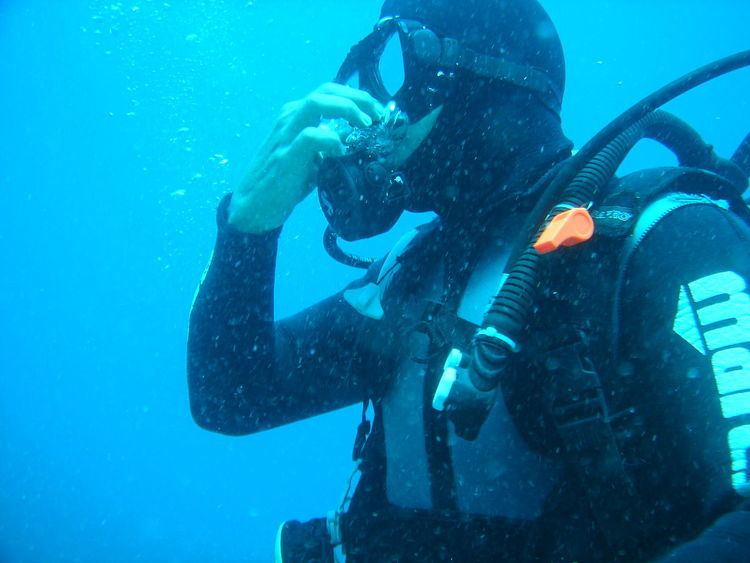 | ||
Ear clearing or clearing the ears or equalization is any of various maneuvers to equalize the pressure in the middle ear with the outside pressure, by letting air enter along the Eustachian tubes, as this does not always happen automatically when the pressure in the middle ear is lower than the outside pressure. This need can arise in scuba diving, freediving/spearfishing, skydiving, fast descent in an aircraft, fast descent in a mine cage, and being put into pressure in a caisson or similar pressure-bearing structure, or sometimes even simply travelling at fast speeds in an automobile.
Contents
People who do intense weight lifting, like squats, may experience sudden conductive hearing loss due to air pressure building up inside the ear. They are advised to engage in an ear clearing method to relieve pressure, or pain if any.
Methods
The ears can be cleared by various methods, some of which pose a distinct risk of barotrauma including perforation of the eardrum:
No single method is considered safest or most successful in equalization of the middle ear pressure. Using alternative techniques may improve the success individually when a technique fails.
Precautions
The pressure difference between the middle ear and the outside, if not released, can result in a burst eardrum. This damages hearing, and if this occurs underwater, cold water in the middle ear chills the inner ear, causing vertigo. The pressure difference can also cause damage to other body air spaces, such as the paranasal sinuses. This can also be caused by damaged sinus ducts.
To allow successful equalization when diving, it is important that the diving suit hood does not make an airtight seal over the outside ear hole, and that earplugs are not worn. It is not recommended to dive when a eustachian tube is congested or blocked, e.g. with the common cold, as this may cause what is known as a reverse block. Descent is uninhibited as the Valsalva maneuver may still clear the eustachian tubes temporarily by force, but during ascent a blockage may stop the air in the middle ear (which is now at depth pressure) from escaping as the diver ascends. The eardrum then bursts outwards, causing the same hazards as with an ordinary burst eardrum, such as cold water in the middle ear deranging the working of the sense organs of balance in the inner ear.
Decongestants
Nasal congestion may affect the sinus openings and the eustachian tubes and may lead to difficulty or inability to clear the ears. To prevent congestion, allergies can be treated by the use of antihistamines, decongestants and nasal sprays, and allergy desensitization. Recently developed antihistamines do not cross the blood-brain barrier and do not produce drowsiness, but may only be available by prescription.
Decongestants can have side effects such as speeding up heart rate which may have adverse effects in cases where there is underlying cardiovascular disease. Over-the-counter nasal sprays can produce a rebound effect causing greater congestion when the effect wears off, which can lead to reversed ear blockage on ascent. Some steroid nasal sprays do not have this side effect and can be very effective, but may also only be available by prescription.
Combinations of the same drugs are useful in non-allergic rhinitis. These medications can be very useful in controlling the nasal congestion problem.
Training
Divers get training in clearing the ears before being allowed to dive. Because of the potential for side effects of the valsalva maneuver, scuba divers and free-divers may train to exercise the muscles that open the Eustachian tubes in a more gentle manner. The French underwater association (Fédération Française d'Études et de Sports Sous-Marins) has produced a series of exercises using the tongue and soft palate to assist a diver in clearing their ears by these techniques. These recommendations were based on work done at the Médecine du sport, Bd st Marcel, Paris.
With practice it is possible to close the nostrils hands-free by contracting the compressor naris muscles.
